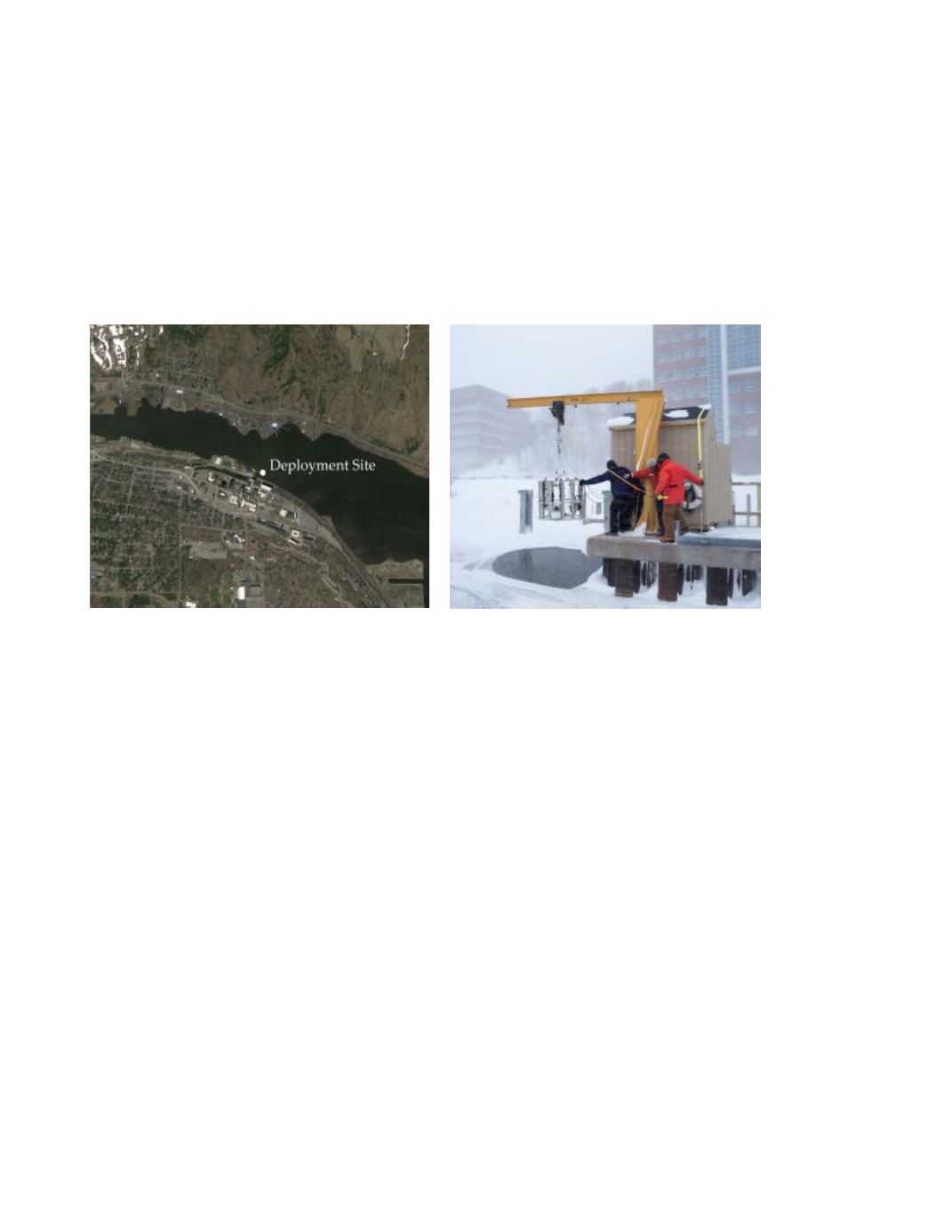

Ref. No. [UMCES] CBL 2016-010
ACT VS16-01
43
Moored Deployment at Michigan Tech Great Lakes Research Center
The
15 week deployment under ice took place from January 9 through April 22 in the Keweenaw
Waterway adjacent to the Great Lakes Research Center in Houghton, MI. The deployment site is
located at 47.12° N, 88.55° W, at the end of the pier at the Great Lakes Research Center docks. This
site is located on the south side of the Keweenaw Waterway, and is connected to Lake Superior in both
the NW and SE directions. The instrumentation rack was lowered off of the end of the pier with a ½
ton crane and rested on the bottom, under the ice, in 4.5m of water. A small shelter was constructed at
the end of the pier to provide shelter during winter sampling efforts.
Photo 1.
Aerial view of the Keweenaw Waterway (left) and dockside mooring deployment (right).
Time series results of ambient conditions for temperature and specific conductivity are given in
figure 1. Temperature ranged from 0.04 - 5.3
o
C and specific conductivity from 87 - 137 µS/cm over
the duration of the field test. The bottom panel displays the maximum difference recorded between all
reference thermistors mounted at the same depth as the sensors sampling intakes as well as a meter
above, at different locations across the mooring rack. The average temperature difference observed
across the space of the mooring rack was 0.01
°
C with a maximum of 0.98
o
C. Differences between
instrument and reference readings resulting from this variability should be minimized as the sampling
bottle integrates across the mooring space.
Unexpected shifts between adjacent reference samples were noted on three occasions during
the test. Upon inspection it was determined that these shifts occurred during changes in the batches of
Winkler reagents. A correction to reference values was subsequently made based on the magnitude of
change observed between the adjacent Winkler measurements after adjusting for ambient changes
determined by the average of all seven DO sensors deployed on the mooring. Adjusted values are
noted within each figure.
The AroW-USB operated successfully throughout the entire 15 week deployment and
generated 9859 observations based on its 15 minute sampling interval, for a data completion result of
100%. Time series results of the AroW-USB and corresponding reference DO results are given in
figure 2 (top panel). Ambient DO measured by the AroW-USB ranged from 8.669 to 15.076 mg/L
compared to the range captured by reference samples of 10.918 to 14.007 mg/L. The sharp excursion
observed the second week of April was real and was picked up by all instruments and correspondingly
seen in specific conductance and temperature variability across the instrument rack (Fig. 1).
















